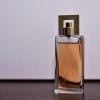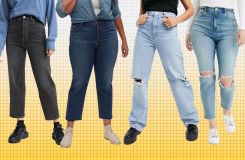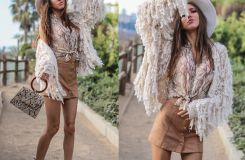
Because gym clothes tend to look so good, wearing them has evolved into more of a lifestyle and given rise to the concept of athleisure. But fitness apparel does more than just look great—it also helps people perform better in the gym.
The ideal attire for the gym is the kind that the wearer will forget they are wearing once they begin their workout. It is much more likely that you will quit your workouts if the clothes you are wearing are making them uncomfortable, or you may feel self-conscious or restricted while you are working out.
How to Choose the Best Gym Clothes
As a result, here is a rundown of what you should search for when purchasing clothes for the gym.
Activity-friendly Clothing
You could wear the same clothes for every workout, but some activities are more fun when you dress for them.
Padded cycling shorts, for instance, can greatly improve the comfort of long bike rides, but they aren't always the best option for running or group exercise classes. Cycling shorts are just as unsuitable as running shorts because they lack padding and tend to bunch and chafe.
Keep to garments that are made for the pursuit at hand, and you'll feel much better. As we'll see in a bit, this "rule" also applies to footwear.
Comfiness
The best workout attire is not constrictive, allows for proper airflow to prevent overheating, makes you forget you're wearing it once you get moving, and is made specifically for the activity you intend to engage in.
Working out can be less enjoyable if you're bothered by discomforts like thick seams, restrictive or tight sleeves, and a back that rides up when you lean forward. Try on your workout gear to make sure it fits well and is comfortable.
Wicking Materials
You can find workout wear made from a wide range of materials, from traditional cotton to modern synthetic fibres engineered to allow perspiration to evaporate but keep the rain out.
The term "wicking" refers to a fabric's capacity to pull moisture away from the skin and channel it through the fabric so that it can evaporate more quickly. This ensures your skin stays dry and cosy.
As a rule, cotton and other natural fibres don't make great wickers. Cotton clothing acts like a sponge and soaks up any moisture it comes into contact with. Wet cotton is clammy and unpleasant; it becomes unwieldy and loses its shape. In this position, the cold, wet fabric is in direct contact with your skin, both cooling and irritating you. Muscle cramps are a common side effect of cooling down.
Technical and synthetic fabrics often have superior wicking properties. Use wicking materials if you plan on doing any kind of exercise that will cause you to sweat, such as running, cycling, hiking, etc.
Anti-Microbial Properties
Have you ever noticed that your workout clothes, no matter how often you wash them, smell as if you never wore them?
Workout clothes aren't necessarily dirty after being washed; rather, there are microbes embedded in the fabric that washing won't get rid of. You could buy clothes that have anti-microbial properties or you could soak your clothes in white wine vinegar to kill these microbes.
To a much lesser extent, these garments treated in this way will retain odours that regular washing won't remove.
High-Visibility
If you're going to be working out outside at night, wear clothes that will make you visible to drivers. This entails the use of bright colors and reflective striping. A flattering shade of black can backfire if it renders you invisible to other drivers on the road.
When working out at night, it's important to be seen, so wear bright, reflective clothing.
Anti-UV Filters
Clothing with UV protection may be useful if you exercise outside in the sun. It is widely accepted that being out in the sun for twenty to thirty minutes is beneficial because it causes the body to produce vitamin D.
However, you may want to protect yourself from the sun if you are particularly sensitive to its rays, if you live in a particularly sunny region, if you spend a lot of time outdoors, or if you plan on staying outside for a long time.
The SPF rating system is also used to rate UV protective clothing; the higher the number, the more protection you will receive from the sun. Sunscreen should still be applied to any exposed skin, but UV-protective clothing only protects the skin that is actually being worn.
Was this helpful?
Kingerlon collects & utilizes cookies from third-parties & affiliate networks to improve user experience. If you buy a product or service after clicking on one of our links, we may get a commission.










